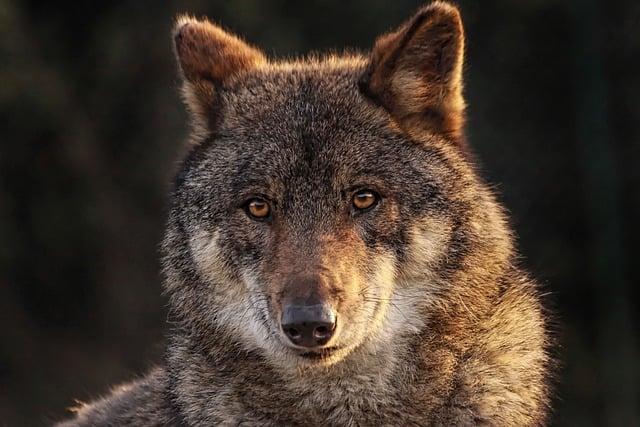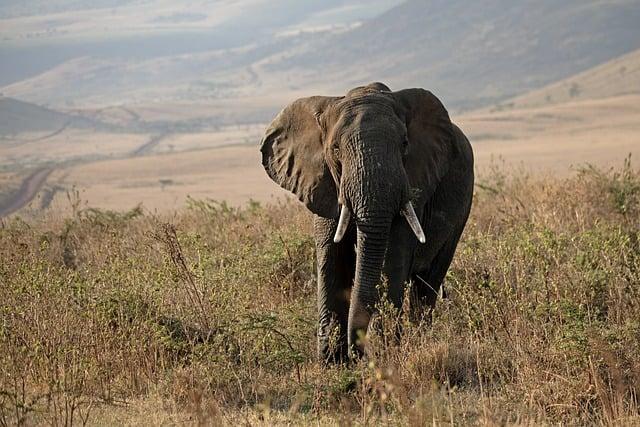In a debatable transfer aimed toward addressing acute meals shortages, Namibia has introduced plans too cull over 700 animals, together with elephants and zebras, to supply much-needed sustenance for its suffering inhabitants. The verdict comes amid escalating issues over meals lack of confidence exacerbated via local weather exchange, droughts, and the lingering results of the COVID-19 pandemic. Whilst officers argue that the culling is a vital measure to relieve starvation, the plan has ignited a fierce debate amongst conservationists, animal rights advocates, and native communities, who warn of the ecological and moral implications of one of these drastic motion. As Namibia grapples with the intricate steadiness between human survival and flora and fauna conservation, this resolution highlights the advanced demanding situations confronted via international locations confronting the dire penalties of environmental crises and socio-economic pressures. Scripps Information delves into the ramifications of this exceptional plan and explores its affect on each native communities and the wider conservation panorama.
Namibia’s Arguable Determination to Cull Endangered Natural world Amidst Meals Lack of confidence
In a call that has ignited fierce debate amongst conservationists and humanitarian advocates alike, namibia has introduced plans to cull over 700 animals, together with iconic species similar to elephants and zebras, as a reaction to acute meals lack of confidence devastating its rural communities. This exceptional transfer has raised critical moral questions over the steadiness between human survival and flora and fauna conservation. Proponents argue that towards the backdrop of a worsening financial disaster, the place many voters face hunger, prioritizing human wishes is very important. Regardless that, critics warn that such movements may just additional endanger already inclined populations and disrupt ecosystems that depend on those majestic animals.
The federal government asserts that the culling is a vital intervention to relieve quick starvation, particularly in spaces the place typical meals assets had been significantly depleted.To offer context, this plan is noticed as a reactive measure, influenced via a couple of components together with drought, inhabitants expansion of flora and fauna, and shortages of agricultural outputs. Under is a breakdown of the proposed cull via species:
| Species | Estimated Culling Numbers | Rationale |
|---|---|---|
| Elephants | 300 | Overpopulation & Human-Natural world War |
| Zebras | 200 | Meals Shortage & Habitat Harm |
| Antelope | 150 | Useful resource Festival |
| Different Species | 50 | Basic Overpopulation |
As Namibia grapples with the fallout of this contentious resolution, reviews break up sharply—some laud the federal government for taking decisive motion within the face of desperation, whilst others worry that this would sign a troubling priority for flora and fauna control practices within the area. The advanced interaction between human wishes and environmental stewardship is laid naked on this quandary, elevating pressing questions on sustainable answers and the ethical tasks of countries against each other people and nature.

The Have an effect on of Animal Culling on Namibia’s Ecosystem and Biodiversity
The new resolution via Namibian government to cull over 700 animals, together with iconic species similar to elephants and zebras, has raised vital issues referring to its ramifications at the nation’s ecosystem and biodiversity. Culling, whilst ceaselessly justified as a way to regulate overpopulation and save you human-wildlife struggle, could have cascading results at the refined steadiness inside of ecosystems. The removing of huge herbivores like elephants performs a an important function in shaping their habitats; their foraging behaviors assist care for the construction of savannas and woodlands, which can be important to a large number of different species. As those keystone species diminish, it should result in a decline in plant variety and negatively affect the species that rely on those habitats for survival.
Additionally, the affect does no longer forestall on the quick lack of particular person animals; it extends to the social buildings inside of herds and populations. the culling of elephants, recognized for his or her advanced social bonds, may just disrupt circle of relatives gadgets, resulting in doable long-term behavioral adjustments that have an effect on replica and survival charges. Moreover, the culling would possibly spark a vicious cycle of environmental imbalance, exacerbating problems similar to habitat destruction and resource scarcity. This intervention raises vital questions on find out how to steadiness human wishes with conservation efforts, and whether or not sustainable possible choices may exist that prioritize each biodiversity prevention and group welfare.


Exploring Possible choices: Sustainable Answers for Addressing Meals Shortage in Namibia
The new resolution to cull over 700 animals, together with majestic elephants and iconic zebras, has ignited a heated debate about meals shortage in Namibia. This drastic measure raises vital questions on sustainable practices and the long-term implications for flora and fauna conservation. As a substitute of resorting to such measures, it’s important to discover choice answers that prioritize each human and ecological well-being. Methods that concentrate on improving agricultural productiveness, bettering water control, and selling native meals methods can give a twin advantage of assuaging starvation whilst making sure the preservation of Namibia’s wealthy biodiversity.
Possible sustainable answers come with:
- Group-based farming projects: Encouraging small-scale farmers thru coaching and get admission to to assets can spice up meals manufacturing.
- Agroforestry: Integrating bushes and shrubs into agricultural landscapes complements soil well being and biodiversity whilst decreasing reliance on animal culling.
- Water conservation applied sciences: imposing rainwater harvesting and drip irrigation can optimize water use in arid areas.
- Supporting native markets: Strengthening native provide chains can decrease meals waste and build up get admission to to inexpensive vitamin.
Via those cutting edge approaches, Namibia can pave the best way against a extra sustainable long run, making sure that meals safety does no longer come at the price of its flora and fauna and herbal heritage. Through prioritizing ecological integrity along human wishes, the rustic can construct resilience towards long run crises and foster a harmonious coexistence between other people and nature.

global Reactions and the Function of conservation Organizations in Namibia’s Disaster
The new declaration via Namibian government to cull over 700 animals, together with iconic species like elephants and zebras, has sparked a wave of global fear and condemnation. Natural world conservation organizations, such because the Global flora and fauna Fund and Save the Elephants, have voiced their opposition, emphasizing the ecological significance of those animals. Their arguments spotlight broader problems with sustainability and the long-term implications this resolution will have at the already fragile ecosystems in Namibia. Many mavens are urging the federal government to hunt choice answers that prioritize each animal and human welfare with out resorting to mass culling.
Amid the disaster, a number of key conservation organizations are mobilizing to supply humanitarian assist and paintings collaboratively with the Namibian executive. World collaboration is important, with projects together with:
- Emergency Meals Provides: helping native communities with quick meals wishes to attenuate reliance on flora and fauna.
- Conservation Schooling: Selling consciousness about sustainable practices that may beef up each livelihoods and biodiversity.
- Analysis Investment: Supporting research that assess the affects of flora and fauna inhabitants control and possible choices to culling.
To additional illustrate the dire state of affairs, right here’s a abstract of the declining assets in Namibia:
| useful resource Class | Present Standing | Possible Answers |
|---|---|---|
| Water Provide | Seriously restricted because of drought | Put money into sustainable water control |
| Meals Safety | Expanding use of flora and fauna as meals supply | Increase agricultural projects |
| Natural world Inhabitants | Threatened via culling | Advertise ecotourism and conservation efforts |

Long term Implications: balancing Natural world Conservation with Human Survival Wishes
As namibia faces the daunting problem of balancing flora and fauna preservation with the quick survival wishes of its human inhabitants, vital questions get up in regards to the sustainability of such choices.Killing over 700 animals, together with iconic species like elephants and zebras, raises moral issues and ignites debate amongst conservationists and policymakers. The will for meals safety in human communities is plain; on the other hand, the long-term implications on biodiversity and the ecosystems those animals inhabit should no longer be overpassed.Efficient methods may just come with protective habitats, imposing sustainable looking practices, or improving agricultural the right way to alleviate hunger with out resorting to drastic measures.
Additionally, the connection between flora and fauna and human communities will have to evolve against coexistence somewhat than struggle. This would contain:
- Group-Primarily based Conservation: Empowering native populations to regulate assets sustainably.
- Ecotourism Development: Producing earnings thru flora and fauna tourism, which is able to fund each conservation and group wishes.
- Schooling and Consciousness: Elevating consciousness in regards to the significance of flora and fauna in keeping up ecological steadiness.
In navigating those advanced demanding situations, collaborative efforts some of the executive, conservation organizations, and native communities are crucial to create answers that honor each people and flora and fauna.
Wrapping Up
Namibia’s debatable resolution to cull over 700 animals, together with iconic species similar to elephants and zebras, highlights the advanced intersection of flora and fauna control and meals safety. because the country grapples with the twin crises of drought and financial instability, government are tasked with balancing the quick wishes of the human inhabitants towards long-term conservation goals. Whilst this plan targets to relieve starvation, it raises vital moral questions and issues about its affect on biodiversity. As Namibia strikes ahead, endured conversation amongst executive officers, conservationists, and native communities will probably be crucial to navigate those demanding situations and make sure the sustainable coexistence of other people and flora and fauna on this various panorama. The unfolding state of affairs serves as a stark reminder of the tough alternatives confronted via international locations international as they try to handle urgent humanitarian wishes whilst safeguarding our planet’s herbal heritage.
Source link : https://afric.news/2025/02/27/namibia-plans-to-kill-over-700-animals-including-elephants-and-zebras-to-feed-starving-population-scripps-news/
Creator : Noah Rodriguez
Submit date : 2025-02-27 18:29:00
Copyright for syndicated content material belongs to the related Source.



